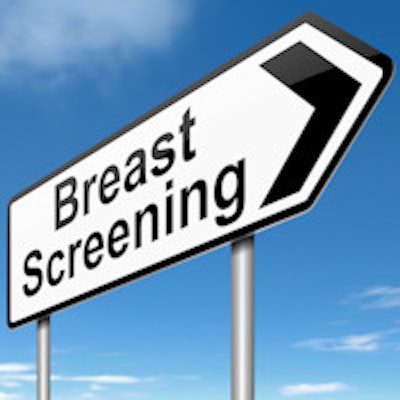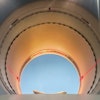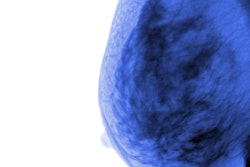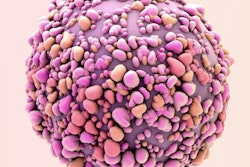
Almost half of women eligible for breast cancer screening have dense tissue -- a characteristic that can limit conventional mammography's performance. To work around this, clinicians need supplemental imaging modalities, and molecular breast imaging (MBI) is an effective option, according to a study published in the August issue of the American Journal of Roentgenology.
It's not that there aren't other technologies out there, wrote a group led by Dr. Robin Shermis from ProMedica Breast Care in Toledo, OH. MR has been shown to be an effective supplementary screening modality for women with more than a 20% risk of breast cancer, but it can be costly. Ultrasound has also been shown to increase cancer detection in women with dense tissue, but its drawbacks include increases in false-positive rates, the number of biopsies conducted, and interpretation time.
 Dr. Robin Shermis from ProMedica Breast Care.
Dr. Robin Shermis from ProMedica Breast Care.MBI is a good alternative, with a cost similar to conventional mammography and a manageable radiation dose, Shermis told AuntMinnie.com.
"MBI is a very effective adjunct screening modality to mammography," he said. "It's easy to use, it's inexpensive, and it's safe."
Dealing with dense tissue
In the study, Shermis and colleagues included 1,696 women with dense breasts and negative mammography results who underwent screening with molecular breast imaging at ProMedica Breast Care between May 2011 and August 2014. As part of the MBI procedure, the women received 300 MBq (8 mCi) of technetium-99m sestamibi (AJR, August 2016, Vol. 207:2, pp. 450-457).
MBI detected 13 cancers that mammography didn't identify; seven were in heterogeneously dense tissue and six were in extremely dense tissue. Eleven of the 13 cancers were invasive.
The incremental cancer detection rate was 7.7 per 1,000, the researchers found. The recall rate was 8.4%, and the biopsy rate was 3.7%. Positive predictive value for recall (PPV1) was 9.1%, while the positive predictive value for biopsy (PPV3) was 19.4%. (Since 2014, ProMedica's PPV3 rate has further increased to 25%, Shermis said.)
MBI also beat ultrasound when it came to incremental cancer detection and PPV for biopsy, according to the authors. Studies have found that supplementary screening for dense breasts in the general population using ultrasound has a cancer detection rate of 1.8% to 3.3% and a PPV3 rate of up to 11%.
"Molecular breast imaging significantly improves the results of screening breast ultrasound," the group wrote.
Shermis et al then compared the performance of MBI in their study to that of mammography, as found in data from the U.S. National Cancer Institute's Breast Cancer Surveillance Consortium (BCSC).
| Comparison of performance measures for MBI and mammography | ||
| Performance measure (per 1,000 screens) | MBI | Mammography* |
| Cancer detection rate | 7.7 | 4.2 |
| Invasive cancer detection rate | 6.5 | -- |
| Recall rate | 8.4% | 9.6% |
| Biopsy rate | 3.7% | -- |
| PPV1 (recall) | 9.1% | 4.3% |
| PPV3 (biopsy) | 19.4% | 29% |
Finally, what about radiation? Although the radiation dose for an MBI exam is higher than for mammography, the dose is reasonable, according to the researchers. In this study, the total effective dose to the body from the MBI exam was 2.3 mSv, compared with a typical dose in mammography of 0.56 mSv.
The MBI dose "is still lower than the annual radiation exposure from natural sources in the United States, which is about 3 mSv," the group wrote. "The risks associated with molecular breast imaging ... are acceptable in light of the benefit of early detection of breast cancer."
A good fit
Having another tool in the breast cancer screening arsenal can only help women, according to Shermis and colleagues, and MBI has a number of benefits. The cost of an MBI device is similar to the cost of a mammography unit, and it has similar room requirements. The exam is covered by Medicare and by most private insurers, and incorporating MBI doesn't affect the screening workflow, they wrote.
In the end, it comes down to whether a facility is committed to providing screening alternatives for women in its community who have dense tissue, Shermis told AuntMinnie.com.
"If you're dedicated to the concept of offering breast cancer screening beyond mammography, MBI is a cost-effective and efficient option -- and well-tolerated by patients," he said. "It's really the 'sweet spot' for adjunct screening."





















